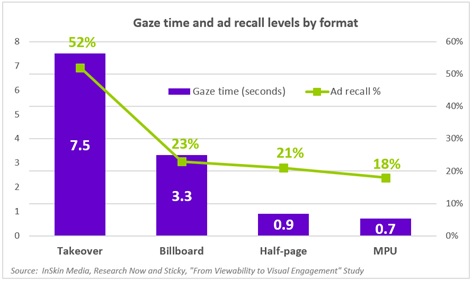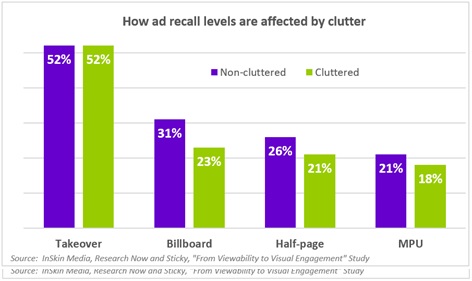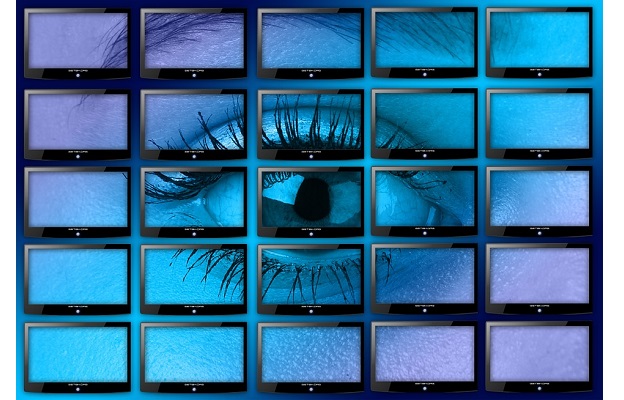An online ad needs to be on the screen for 14 seconds to have any chance of being looked at, according to a new study on the relationship between viewability, gaze time, ad clutter and people’s ability to remember ads.
The study – by InSkin Media, Research Now and Sticky – involved four companies, nearly 4,300 consumers, and technologies including eye-tracking (by Sticky) and viewability measurement (by Moat).
Key findings:
Viewable vs actually looked at
Eye-tracking reveals that 25% of ads defined as viewable – i.e. meeting minimum industry guidelines of 50% of the pixels being on screen for least one second – are never looked at. One third achieve a gaze time (time spent actually looking at the ad) of less than a second, while only 42% are looked at for at least a second. The median time a viewable ad is actually gazed at is 0.7 seconds.
The study reveals how long an ad needs to be viewable in the first place to hit certain levels of gaze time. On average, to be looked at for up to a second an ad needs to be viewable for 14 seconds. Ads achieving at least one second of gaze time are viewable for an average of 26 seconds. For at least two seconds gaze time the average viewability is 33 seconds, while for 3+ seconds gaze time, average viewability is 37 seconds.

*e.g. the average viewable time of ads that were looked at for at least 1 second was 26 seconds
How gaze time differs by ad format
This time people spend looking at ads differs significantly across four key formats covered – led by page takeovers at 7.5 seconds down to MPUs at 0.7 seconds.

“A campaign should be assessed in three stages: did the ad have the opportunity to be seen, was it actually looked at and what was the impact,” said Steve Doyle, InSkin Media’s CCO. “It should be judged and optimised against the last stage (impact) but the focus on viewability means campaigns are increasingly optimised against the first stage (the opportunity) which can be counter-productive to maximising impact.”
“Why? Smaller formats have higher ‘opportunity to be seen’ rates as their size means it’s easier to hit viewability thresholds – but gaze time is very low. Thus, it’s optimising on low engagement and low impact.”
How clutter affects ad recall
The study reveals how ad clutter impacts how long people look at ads and their ability to remember them. In cluttered scenarios, ad gaze time decreases by 37% on average across the formats.
Although page takeover formats aren’t affected, clutter means ad recall drops by an average of 20% across the other three formats – billboards, half-page’s and MPU’s – with billboards being most affected (-26%).

Ad clutter significantly reduces the attention each ad receives. This translates into weaker recall and lower ad effectiveness,” says Doyle. “Publishers must tread the fine line between more ads which drives more revenue, on a CPM basis, or less ads which mean stronger results for advertisers and a better user experience. It’s obvious which one is most conducive to long-term loyalty from clients and readers.”
Methodology
The study comprised three key elements. Research Now surveyed 4,279 UK adults (aged 18+) online. Of these, 696 eye-tracking records were collected by Sticky using their webcam technology. During these browsing sessions, Moat’s technology tracked the viewability of ads. The study used a monadic cell design, testing four display ad formats.
Source: InSkin Media

